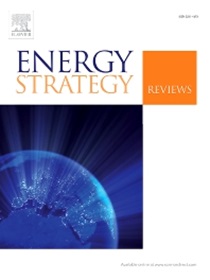中国新能源市场对碳价格波动风险的影响:来自七个试点碳市场的证据
IF 7.9
2区 工程技术
Q1 ENERGY & FUELS
引用次数: 0
摘要
自中国实施碳交易机制以来,碳价格不稳定带来的交易风险显著降低了中国的减排效率。与关注化石燃料对碳价格影响的传统研究不同,本研究强调大规模可再生能源部署中新能源市场的风险溢出。此外,为了解决变量选择的主观性和碳价格决定因素的过拟合问题,LASSO算法与多元GARCH模型相结合。利用中国7个试点市场(2014-2022年)的每日碳配额价格,系统识别了碳价格波动的驱动因素,并严格分析了新能源市场对碳市场风险的异质影响。结果表明,新能源市场波动对碳价格波动有显著影响。CNI新能源指数每增加1%,就会引起碳价格的同步波动:湖北(+ 0.08%)、北京(+ 0.01%)和深圳(+ 0.06%),而上海表现出反向敏感性(- 0.19%)。广东、天津和重庆的房价反应最小。此外,新能源市场与碳市场之间的相关性表现出时间异质性。此外,不对称杠杆效应表明,新能源市场的负面消息对碳市场的影响大于正面消息。本研究促进了对碳价格动态的理论认识,并为加强排放交易体系中的风险管理框架提供了实践见解。本文章由计算机程序翻译,如有差异,请以英文原文为准。
Impact of the China's new energy market on carbon price fluctuation risk: Evidence from seven pilot carbon markets
Since China implemented its carbon trading mechanism, trading risks arising from unstable carbon prices have significantly reduced its emission-reduction efficiency. Unlike traditional research, which focuses on the impact of fossil fuels on carbon prices, this study emphasises risk spillovers from new energy markets amidst large-scale renewable energy deployment. Moreover, to address subjectivity in variable selection and overfitting issues in carbon price determinants, the LASSO algorithm is integrated with the multivariate GARCH model. Using daily carbon quota prices from seven Chinese pilot markets (2014–2022), factors driving carbon price volatility are systematically identified, and the heterogeneous influence of new energy markets on carbon market risks is rigorously analysed. The results indicate that new energy market volatility significantly contributes to carbon price fluctuations. A 1 % increase in the CNI New Energy Index induces co-movement in carbon prices: Hubei (+0.08 %), Beijing (+0.01 %) and Shenzhen (+0.06 %), while Shanghai exhibits inverse sensitivity (−0.19 %). Prices in Guangdong, Tianjin and Chongqing show minimal responsiveness. Additionally, the correlation between new energy markets and carbon markets exhibits temporal heterogeneity. Furthermore, the asymmetric leverage effect suggests that negative news in new energy markets has a more significant impact on carbon markets than positive news. This study advances theoretical understanding of carbon price dynamics and offers practical insights for enhancing risk management frameworks in emissions trading systems.
求助全文
通过发布文献求助,成功后即可免费获取论文全文。
去求助
来源期刊

Energy Strategy Reviews
Energy-Energy (miscellaneous)
CiteScore
12.80
自引率
4.90%
发文量
167
审稿时长
40 weeks
期刊介绍:
Energy Strategy Reviews is a gold open access journal that provides authoritative content on strategic decision-making and vision-sharing related to society''s energy needs.
Energy Strategy Reviews publishes:
• Analyses
• Methodologies
• Case Studies
• Reviews
And by invitation:
• Report Reviews
• Viewpoints
 求助内容:
求助内容: 应助结果提醒方式:
应助结果提醒方式:


